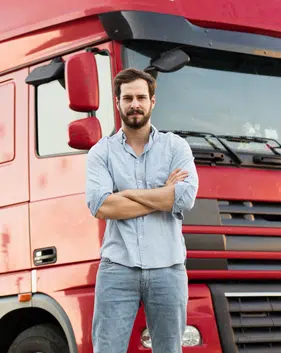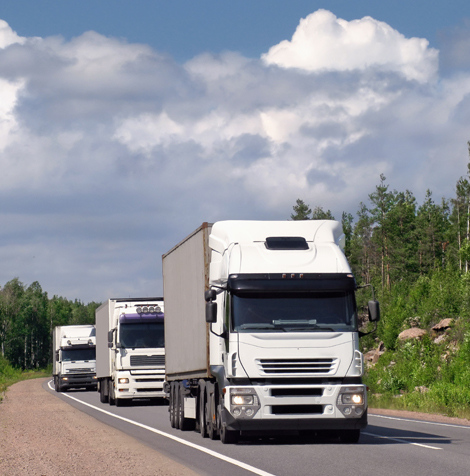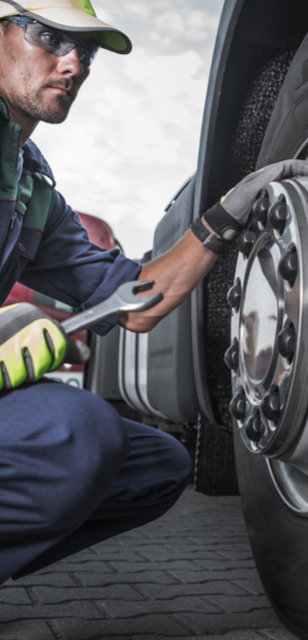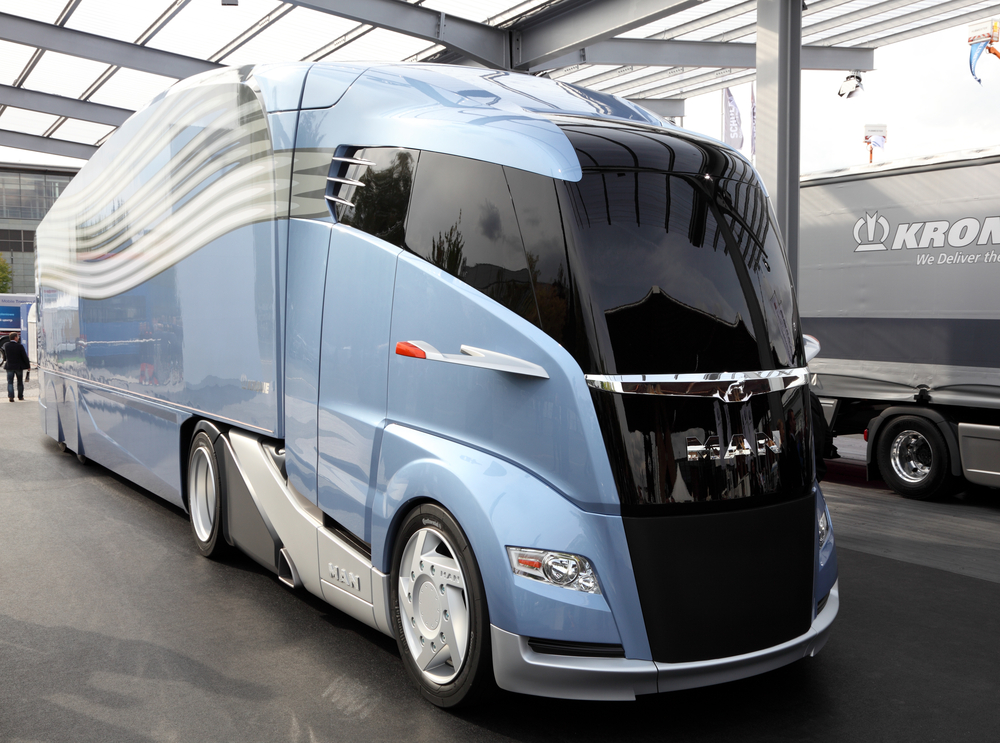Since the 1930s, trucking has been a booming industry. It really took off in the ‘50s and ‘60s with the creation of the Interstate Highway System, and now the very backbone of the American economy relies on these massive vehicles transporting goods across the nation. But with that success has come plenty of backlash.



One of the most common complaints about the trucking industry is its impact on the environment. According to the Environmental Protection Agency, trucks emit about 530 metric tons of carbon dioxide every year. Though the EPA is demanding truck manufacturers increase fuel efficiency, the fact of the matter is that these behemoths will continue pumping more greenhouse gases into the environment than any other vehicle.
Another common complaint is the serious nature of truck wrecks. Though rarer than car accidents, a wreck with a semi truck often leaves passengers with serious or life-threatening injuries. These accidents are, for the most part, caused by human error in one way or another. No matter the cause, the prevalence of the wrecks causes many drivers to be overly cautious while on the roads with semi trucks.
Where’s the Industry going?
One of the biggest fears when it comes to new technology of any kind is, “Am I going to have a job next year?” For truckers, this is a very real fear. But, industry experts don’t think there will be a sudden job loss with autonomous trucks. Rather, truckers will face a transition in their roles. Real drivers will need to be in the cab for many years to come. Moreover, many drivers behind the wheel may be moved to supervisory positions, or could have their roles transitioned to local deliveries. For fleet managers, one of the main concerns is how much transitioning to fuel-efficient and/or autonomous trucks will costs. No doubt, the upfront costs will be massive. But some experts say that self-driving trucks could save over $300 billion in labor costs.

However, when it comes to alternative fuel, the costs — both monetary and opportunity — may not be there. Right now, diesel trucks can go over 1,000 miles on a single refuel. In contrast, Tesla electric semi trucks only boast a 300- to 500-mile range — meaning many more stops to recharge. To go farther on a single charge, more batteries would be needed, which would weigh dow n the truck even more, thus cutting into fuel efficiency.
For environmentally-conscious fleet managers who have the funds to get ahead of the curve, switching over to alternative fuel trucks can worthwhile (if not totally practical) move in the very near future. But for fleet managers who simply don’t have the budget to make the switch right now, don’t worry. It seems the future of alternative-fuel trucks is still far off, unless the entire logistics chain is altered.
Why? Because these alternative fuel trucks simply don’t go as far. That means more pit stops, and for the electric trucks, it could mean adding at least half an hour of delay every 300-500 miles to recharge. That means slower deliveries, which no one in your current logistics chain wants. But, even fleet managers who aren’t on board with alternative fuel trucks right now can still do their part to help the environment. In fact, they’ll be forced to in the next few years.
Over the past few years, the EPA has been conducting studies on fuel efficiency for semi trucks, in conjunction with the National Highway Traffic Safety Administration. They recently issued a ruling that demands fleet managers and truck owners have more efficient trucks. Any trailers in model years 2018-2027 and semi trucks, vans, large pickup trucks, work trucks and buses model years 2021-2027 will have to meet specific performance standards. While buying new vehicles may be a large upfront cost, the EPA estimates it will save a lot of money in the long run.
The EPA estimates that up to 2 billion barrels of oil will be saved under this new program. That comes out to about $170 billion over the life of these new vehicles. As such, the EPA believes the costs of the new vehicles will be recouped in under two years, thanks to these savings. Moreover, the EPA estimates this new program will reduce carbon dioxide emissions by 1.1 billion metric tons. You can read more about this ruling and its effects on specific types of vehicles in the announcement released by the EPA.
Though practical alternative fuel trucks may still be on the distant horizon, better safety features in trucks can be implemented now. Features like forward collision alerts and stability control systems have been in trucks for at least a decade. But as new technology emerges, adapting to it is crucial.
For example, there are now sensors available to help truckers avoid jackknifing and rolling over. These are two of the most serious kinds of accidents, and if they can be avoided, the investment in these sensors are well worth the cost. Not only will fewer trucks get damaged in wrecks, but drivers, fleet managers and others in the command chain can avoid costly court dates and lawsuit payouts.
Of course, there are some safety features that simply aren’t popular with truckers. One such technology is the inward-facing dash cam, a.k.a. The “ Driver Risk Management System.” These systems are designed to see what the driver was doing at the time of a critical event, such as a collision or losing control of the vehicle. For many drivers, these systems seem like they’re always spying on them. But for fleet managers, they can be invaluable tools in the event of a collision or other incident.
Self-driving (autonomous) vehicles are the promised future. Right now, they are still much more expensive than their human-driven counterparts, but companies like Tesla want that to change. But self-driving cars are one thing. Autonomous trucks, on the other hand, is a much bigger problem to tackle.
Organizations like the American Trucking Associations are welcoming the self-driving technology with open arms for a couple of reasons. One, the trucking industry is struggling to find human drivers. When they do find a driver, that human can only drive so far before federal law says they have to stop and rest. Robots, on the other hand, don’t need those breaks.
Two, these trucks could actually save lives. Of the 4,000 or so people who die in trucking accidents every year, the vast majority are killed due to human error. That issue could be eliminated, or at least greatly reduced, with autonomous trucks.
For now, autonomous trucks are only being used for relatively short routes. But don’t be surprised if more and larger fleets begin to accept this new technology for cross-country use. For a long while, a human will be required to be behind the wheel in case of emergency. Even so, some manufacturers are introducing technology like self-caravaning trucks to increase driving and fuel efficiency, all while a human is there to take over if needed.
If you’re a fleet manager, all of this new technology is important to consider. There are a lot of factors at play, from the cost of technology vs. labor hours, or time for recharging alternative fuel vehicles vs. the cost of diesel. Now is the perfect time to meet with your board or management team to determine what course of action is best for your fleet.
Latest Development
How Will Commercial Roadside Assistance Change in the Future?
Though the technology in semi trucks is radically evolving, the need for c ommercial roadside assistance will likely stay the same. However, the function of this service will need to change and adapt to the new technology.
For alternative fuel trucks, the equipment for commercial roadside assistance providers will need to change. They may need to carry specialized equipment to quickly recharge battery cells or hydrogen cells. However, they may also need to still carry gasoline for hybrid or traditional semi trucks, which means more equipment may need to be carried at all times.
Self-driving trucks present a much larger issue. While the simple mechanics of the machine may stay the same, full repairs may require a much higher level of understanding of computers. For example, simple tasks like replacing a flat tire would likely stay more or less the same. However, making repairs under the hood could require a roadside assistance provider to have a high level of knowledge about how each component is connected to a central computer, how it needs to be disconnected and reconnected, etc.
Commercial roadside assistance providers must be ready and able to adapt to these technological challenges. This may mean more extensive training for their technicians and mechanics, or it may mean hiring a support staff whose sole focus is to know the ins and outs of these computer and fuel systems.
This, of course, is based on the complexity of the systems that are currently in semi trucks. If engineers and software developers create a simpler interface and the tools needed to interact safely and successfully with future systems, extensive training may not be necessary.









